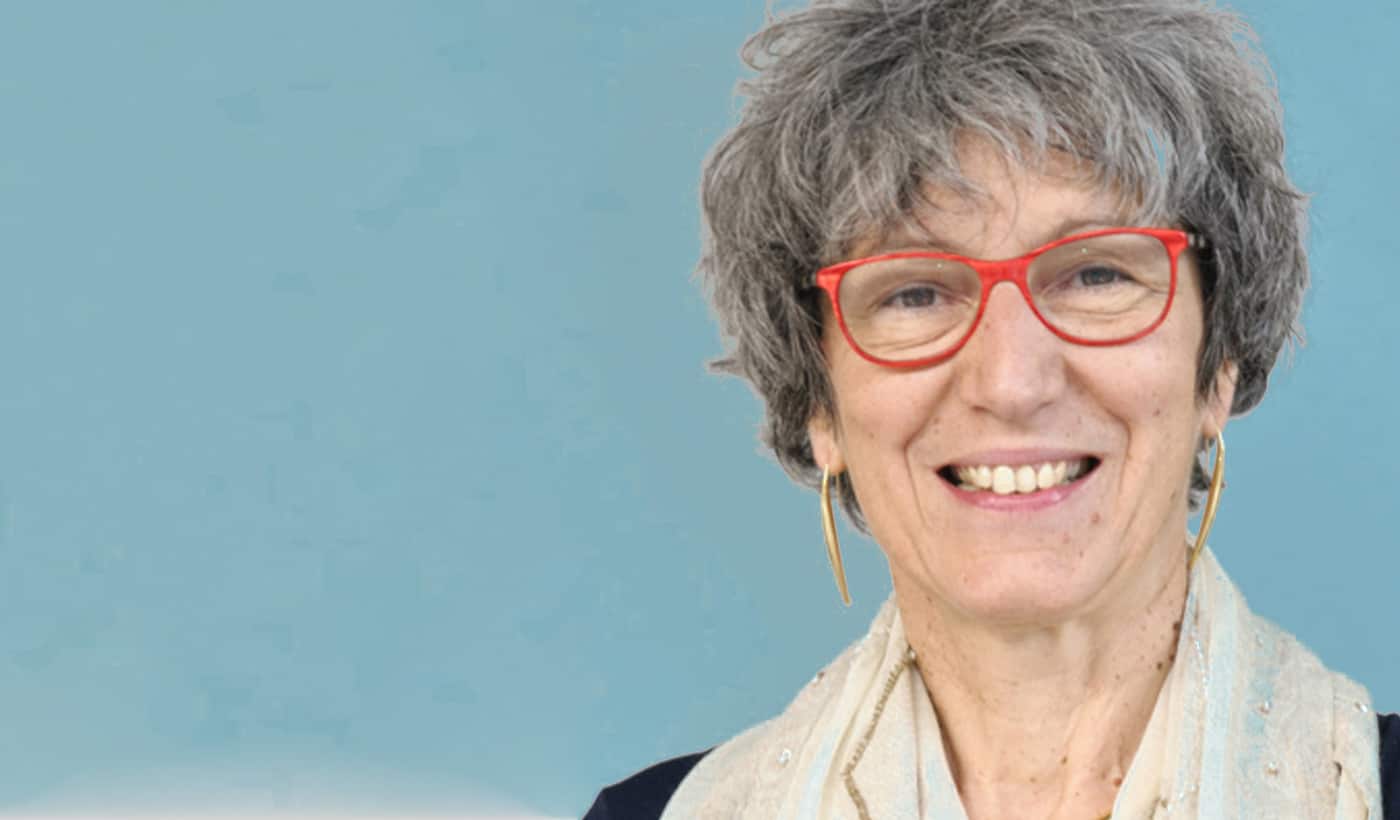
What power do citizens truly have in shaping a city’s fabric?
The word “democracy” comes from a Greek term with the same meaning: the citizens of the city (demos) hold the power (cratein).
‐
As we question the power of citizens in the fabric of Western cities, we come to a paradox. Etymologically, a citizen, or civis, in Latin, enjoys the right to live in the city and manage it – by participating in assemblies, debating on decisions to be made – and to be elected as a magistrate, recalls Bernadette Liou-Gille in her book, Civis Romanus: Initiation aux institutions et à la vie politique romaines sous la République. The word “democracy” comes from a Greek term with the same meaning: the citizens of the city (demos) hold the power (cratein). A democratic regime entrusts the government to all; all are involved in collective choices.
In our representative democracies, citizens delegate their power to representatives. Universal suffrage serves to express the general will through the elected officials. Therefore, in terms of urbanism, since decentralization, the election of the municipal council through universal suffrage ensures the council’s power to vote on the local urbanism plan (PLU) and its adjustments, and to vote on the establishment of a Zone d’Aménagement Concerté (urban development zones or ZAC), for example. Citizens strongly question this indirect power over their living environment. In the words of the first president of the Court of Cassation, Chantal Arens, in her speech on 10 January 2020, a “culture of defiance” towards institutions is developing in the society. The main reasons evoked are the perception of a retreating political power which benefits the economic sphere, and choices in terms of urbanism which are often made by an omnipotent group of municipalities, a scale nevertheless deemed relevant by professionals to pool the thoughts, challenges and resources in the various regions.
But in this context, the types of citizen participation are multiplying, supported by an increasingly close collaboration between the public and private sectors. Political scientist Loïc Blondiaux interprets this as a rising “new spirit of democracy” which bodes well for the future.

How can citizens exercise their civil rights, live in the city and be a part of its fabric?
Several tools favour the participation and empowerment of citizens on four levels that may coexist: information, consultation, dialogue and co-construction.
The emergence of smart cities offers new perspectives to empower citizens to become players in the design and management of their city. The measure of how we travel and the analysis of our forms of mobility, for example, influence the development of traffic routes and the policies implemented to decarbonise them and improve traffic flow.
In parallel, a collective intelligence is being built, which generates a collective fabric in a city, as city residents are getting informed, are consulted, draw benefits from dialogue, and co-construct projects with a wide variety of players. A whole range of tools already exists to that effect: citizen platforms, serious games, neighbourhood councils and participatory budgets. The city’s fabric is also created in a poetic and uncontrollable way through the daily interactions between residents and the pace where they live, and among the residents, through what Michel de Certeau calls “arts de faire”, or the arts of doing.
INFORMATION AND CONSULTATION
There was a time when information, the first type of participation to exist, meant displaying building permits on the walls of a building to be renovated, or on a fence. In the Internet era, municipalities are implementing platforms to inform people on development projects in the area, on which citizens may comment. One example is the website for the Paris city hall. The complaints and suggestions are also collected on numerous apps, documented by researcher Clément Mabi in his article, Citoyen hackeur. Enjeux politiques des civic tech (2017).
Tactical urbanism, a friendlier approach, enables both the emergence of ideas and their implementation, while temporarily favouring different uses of the city. For example, in Montreal, some streets are entrusted to the inhabitants. The city of Bogota, in Colombia, also lets its residents take ownership of a plaza or roundabout. These places become pedestrian areas used for recreation and games, and sometimes host temporary installations before opening back up to traffic. Citizens’ needs are thus expressed and experimented on, then better understood by public services.

CONCERTATION
Neighbourhood councils, which became mandatory in 2002 for cities with more than 80,000 residents according to the law on local democracy, enable inhabitants to give suggestions, debate on points of view and think collectively about the evolution of their living environment. They can take the shape of participatory budgets which have enabled citizens to decide how to spend a certain percentage of the city’s investment budget (generally 5%) since the noughties.
However, the debate between professionals and residents is becoming an increasingly important part of projects chosen by city hall. In Paris, the Ordener-Poissonniers d’Espaces Ferroviaires project, which aims to transform 4 hectares of the Chapelle rail depot, gave way to several citizen dialogue sessions upstream, with 15 commitments integrated into the specifications of the future operator. The final decision met some of the expectations of the people consulted by eliminating some housing units to increase green spaces.
CO-CONSTRUCTION
“Every time you mix very different players, from all different backgrounds, you end up with something very interesting,” comments Michel Lussault, geographer and professor at ENS Lyon. “See the accomplishments of Patrick Bouchain, recipient of the 2019 urbanism award. The architect involves everyone at the same level, from architects and workers/craftsmen to residents, from the design phase to the construction phase. The project coordination and contracting are shared. We inscribe ourselves in the post-war castor (beaver) movement in which residents built a part of their homes.”
By building on the assumption that each and everyone can be a player in her or his own living environment, the urban development office in Taipei developed a “program for environmental improvement in the district” in 1996, according to Patricia Aelbrecht and Quentin Stevens in Public Space Design and Social Cohesion (2019). This program encourages citizens to become “community planners” to improve their district (roads, gardens, interior design of public buildings, etc.) and reinforce their identity. Training sessions were offered to professionalise “community planners”. Since 2012, schools, neighbourhood organisations and local associations have been invited to co-design projects.
In France, fun tools such as the “City Play” serious games, by Bouygues Construction, and “La Ville E+” by Société Générale, bring together municipalities and residents around a project to design a building or an urban area.
“ARTS DE FAIRE”: THE ARTS OF DOING
A city is also made up of community gardens, collaborative supermarkets and even practices such as the “neighbourhood watch” which aim to keep neighbourhoods safe. These city transformations are not often reported in traditional media. But outlets such as the Bondy Blog and the La Cassette podcast in Aubervilliers, a collaborative radio project, invite the first people concerned – residents – to find out and talk about these “arts de faire” which can stimulate our imagination.

Taking a look at current practices: a situational and critical analysis
Most of the time, when people claim something, it’s because they want improvements to their living environment”
‐ Cécile Sornin, Mulhouse deputy mayor in charge of participatory democracy
This observation is shared by the dozen of city council members surveyed in Strasbourg, Paris, Bordeaux and Lyon. According to them, urbanism will be one of the issues discussed in the 2020 municipal elections in France, and residents will have to be involved. While a variety of tools already exist, such as participatory budgets, digital platforms, neighbourhood councils and public dialogues, some candidates suggest adding new ones, such as a “council of citizens on urbanism” or an “urbanism assembly” to promote co-construction, from the design to the evaluation of a project.
But the already-existing tools are scarcely used, and mayors and deputy mayors struggle to promote them to the population. Elected officials and agencies dedicated to citizen participation have identified several factors: a lack of knowledge about the tools, a lack of representativeness or interest for public affairs, a feeling that it matters little or that everything has already been decided in advance, or, quite simply, the lack of a culture of dialogue.
Three hundred people have subscribed to the Mulhouse citizen participation platform, yet just a few dozen have participated in the six participatory councils"
‐ Cécile Sornin, Mulhouse deputy mayor in charge of participatory democracy
LACK OF KNOWLEDGE ABOUT EXISTING TOOLS AND LACK OF REPRESENTATIVENESS
“Three hundred people have subscribed to the Mulhouse citizen participation platform, yet just a few dozen have participated in the six participatory councils,” deplores Cécile Sornin. The digital tools designed to involve citizens are relatively popular. Therefore, the CNIL is recommending the development of technological civic education, so that Civic Techs aren’t used by experts only and may effectively contribute to face-to-face participation. There is a risk that a portion of public decision-making will be disproportionately carried out by certain groups of people (those who are educated or retired) to the detriment of others.
More and more cities (150 in 2019 versus 25 in 2016) are implementing participatory budgets, which generally represent 5% of their investment budget. The city of Porto Alegre (Brazil), where the practice started, entrusts its residents with 20% of its budget – but it remains the exception. In Paris, considerable efforts have been made to involve the population (a communications campaign both online and in the city’s public spaces, such as markets, was put in place to inform people of the system and of the projects). “Too many residents care a lot about their own specific interests, and much less about general interests,” according to an elected official who wishes to remain anonymous.
Loïc Blondiaux in a 2017 interview by Anne Châteauneuf-Malclès
It is true that neighbourhood councils are becoming the norm, even in cities with fewer than 80,000 people. But “most of the participation processes focus on relatively secondary matters, where only minor issues are at stake,” declared Loïc Blondiaux. Public authorities are reluctant to integrate citizen participation into important projects and choices, out of fear of political confrontations, or of losing control over the decision.”
Everything has been decided ahead of time”
‐
“And in the majority of cases, he adds, participation has no influence on the decision. We are still in a dynamic of consultation rather than one of co-construction of the decision with the citizens”. On the other side of the Atlantic Ocean, the same observation was made. “Professionals think they are co-constructing projects when they allow citizens to have a few more green spaces here and one fewer floor on a building there, in the best of cases,” deplores one of the members of the Civitas association in New York, which fights for more human real estate projects in Manhattan. But “co-construction relies on a collaborative approach in the elaboration and implementation of a project. Citizens participate in a project’s piloting, implementation and evaluation,” reiterates Marie-Christine Jaillet.
A NEW CULTURE OF URBANISM
Severe judgements in view of the efforts made by professionals. A serious game such as City Play, by Bouygues Construction, which presents itself as a board with playing cards, combines all stakeholders upstream of the project and invites them to a role-playing game to co-design it. The aim is to walk in the shoes of a mayor, resident, worker that does not live there, etc. Dozens of urban projects were designed in France, in Switzerland, and even in Morocco. This new way of designing cities enables users to come up with well-thought-out neighbourhoods. Now, the goal is to succeed in “integrating and applying the ideas that were set forth, which is not always easy in the end, because of the economic and legal constraints,” analyses Clémentine Morin, property development director at Linkcity.
For Michel Lussault, geographer and professor at ENS Lyon, in order to “restore confidence in cooperative and participatory involvement, mayors must dare to imagine local urbanism plans (PLUs) which are as flexible as the law will allow, and aim to obtain the right to experiment in order to create exceptions to the law when the situation requires it. Private players must also learn to put themselves in the position of a city willing to learn.”

Interview with Marie-Christine Jaillet
Interview with Marie-Christine Jaillet, sociologist and research supervisor at the Interdisciplinary Laboratory of Solidarity, Societies and Regions (LISST) of the CNRS.
URBANISM IS ONE OF THE FLAGSHIP THEMES OF THE 2020 MUNICIPAL ELECTIONS. IN THEIR RESPECTIVE AGENDAS, SOME CANDIDATES PROMISE THE CREATION OF A “COUNCIL OF CITIZENS FOR URBANISM” OR OF AN “URBANISM ASSEMBLY”. WITHIN MUNICIPALITIES, COULD URBANISM BECOME EVERYONE’S BUSINESS TOMORROW?
Our societies are no longer satisfied with representative democracy alone. Entrusting their living environment to elected officials is not enough for the residents. Up until now, however, our political model relied on delegating power. We must review this model to introduce more participation without imposing representativeness as a prerequisite for those selected to participate.
However, there is a risk that certain social groups will participate disproportionately. We can resolve this issue in various ways, for example by a random draw, since all citizens are capable of participating in decision-making on a city’s structure if they are given the means – I’ll come back to that. It is up to the municipalities to enable and organise the best possible participatory system.
When citizens are involved, they do not always choose what is best for everyone; they often defend their own interests."
‐
HOW DO WE GIVE POWER BACK TO THE CITIZENS WITHOUT TAKING IT AWAY FROM THEIR REPRESENTATIVES?
We cannot idealize participation. When citizens are involved, they do not always choose what is best for everyone; they often defend their own interests. What legitimises elected officials is their embodiment of the interests of the public at large over those of the individuals. However, through participation, we can get citizens with conflicting interests to come to a consensus because their point of view will be taken into account; we can get them to “build a common interest”.
THAT MEANS A GOOD MAYOR WOULD BE ONE THAT IS ABLE TO BRING PEOPLE TO A CONSENSUS?
We are immersed in a culture of conflicts. We have to bet more on the compromise or consensus that real participation can allow. But there will still be situations in which conflict will remain. In these cases, the elected officials will have to make the decision.

WHAT ABOUT THE EXPERTS?
Citizens are experts! It is important to involve citizens as expert users of their cities; their expertise is of equal value to that of professionals, even though it differs in nature. The reluctance to participation that is observed does not come only from elected officials; it comes from the technical sector, which deems that citizens are not competent or capable of taking into account the complexity of urban development. This is false. If citizens are informed of the constraints, for example, they can understand and integrate them. But they must be communicated clearly. We can further observe that professionals may feel rivalled by user expertise, or by the professional competence of some citizens (those who are lawyers, engineers or architects by trade). But this feeling of rivalry can dissipate if fruitful cooperation occurs.
DELEGATING POWER TO ELECTED OFFICIALS SAVES TIME…
I’m not so sure. The time spent together on dialogue is not wasted if it avoids later conflicts which may cause delays in the completion of a number of projects. It takes time to inform, discuss, argue and debate. Today, when creating a timeline for development project management, we must integrate the time necessary for dialogue. Otherwise, building permits, whether for public or private operators, are appealed before the administrative court, which blocks the completion of the projects, as was the case in Toulouse.
Participation systems are increasingly integrated upstream of project implementation, to meet various goals and ambitions. Many cities have had exemplary experiences with participation. For example, in Toulouse, there was a great debate on the project of a third metro line, a major and strategic piece of infrastructure. Some suggestions were taken into account and the project was adjusted accordingly. It was a positive experience. The goal is now to transition from these exemplary experiences to ordinary general law. Participation must become a habit.
IS PARTICIPATORY DEMOCRACY SOMETHING THAT RESIDENTS TRULY WANT? HAVE THEY EXPRESSED THIS NEED?
We can make that bet. As president of the CODEV (the Toulouse metropolitan area development council) in charge of a research programme on French metropolitan areas, I follow the debates on major development challenges. When a project is presented, it is often met with criticism and opposition. This is because citizens do not participate and are not involved in its conception. If we give them a voice and take it into account, we give ourselves the means to overcome the fears and suspicion that may arise from any project that is perceived as being imposed to them.

